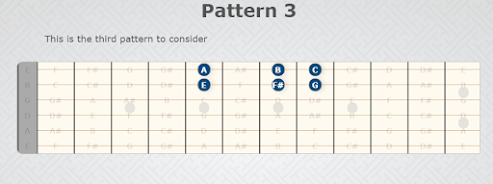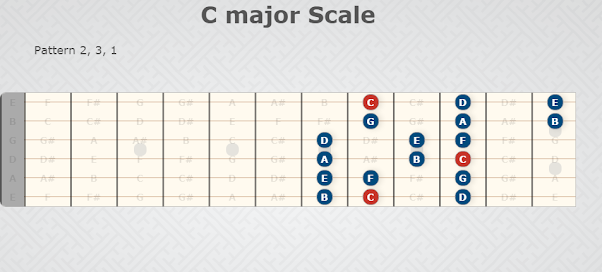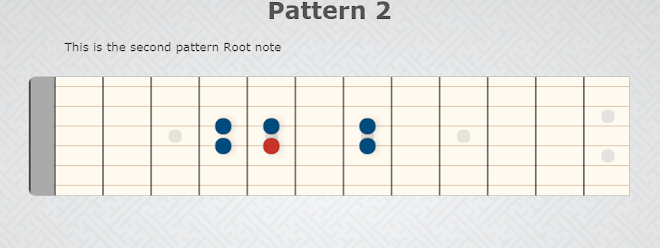Modes - Scale Shapes you should know
FIRST THINGS FIRST..
If you find this article useful, please subscribe, it really helps my blog.
There are certain patterns that appear on the guitar fretboard and it is worth looking at these and memorising them to make things easy for yourself when learning any sort of scale or modes. These patterns are great to across the fretboard but by changing the starting point, you may also move up the fretboard.
There are three main patterns to consider when looking at the guitar, and they will always follow each other. These are those patterns:-
I have put notes on these diagrams for context, it is the shape we are concerned with here, not the actual note..yet. Just look at how the notes relate to the others in each individual pattern.
The next thing we shall look at is the root note for each shape. We will consider the Major Scale - or Ionian Mode first.
MAJOR SCALE
So let us look at pattern 1 above and see what we can make of it.
You can firstly see it is a block of three notes stacked on frets, one above the other. The root note in this instance is, here:-
The second pattern has 3 notes stacked upon each other on the related frets, two notes are one fret apart followed by the next note two frets apart, as seen below. Please take notice of the root note in this pattern
Pattern three has 3 notes stacked upon each other on the related frets, two notes are two frets apart followed by the next note one fret apart, as seen below. Please take notice of the root note in this pattern
HOW DOES IT WORK
Ok, so we now know that every time we see pattern 1, the root note is going to be in the middle row nearest the nut. The second pattern follows with the root note on the upper line, second note across, and finally the third pattern has the root note on the upper line third note across.
I will show you how this would work in action, note the shift in position to take account of the B string
When pattern 1 starts on the 6th string:-
You can see how patterns 1, 2 and 3 follow each other in this diagram. You can see on the highlighted notes of G and C on the top two strings how pattern 1 would be starting again.
Looking at one more pattern for, let's say, the 3rd pattern and see how the C Scale would fit, rememeber it's going to continue 1,2,3,1,2,3 in pattern formation. So if we start with Pattern 3, it will go 3,1,2. We shall use at the same starting note as above i.e. the 8th fret on the low E string (6th string). We know the root note in pattern 3 is the 3rd note on the upper line.
We may as well finish off by looking at the 2nd pattern for the C major Scale:-
Now add Pattern 3
Add pattern 3
and of course pattern 1 would duplicate on the 6th string (note C D E) in the above diagram. I have not put these notes on the fretboard to try and keep things clear.
GETTING MODES FROM THESE PATTERNS
As you may be aware, the open strings of the guitar in normal tuning are EADGBE. So moving from the E to the A, the A to the D etc. We move around the Circle of fourths, except the B string where we 'shunt' everything along one fret. If we move from the E to the B, then the G to the D, the D to the A, etc. we are moving along the Circle of Fifths. if you are unsure of this please read my article What are Guitar scales and Intervals? https://guitareview4.blogspot.com/2021/03/what-are-guitar-scales-and-intervals.html
All you have to do is move the root note to in a higher direction, staying on the same fret (remembering the B string) for the Lydian Mode and in a Lower direction, again staying on the same fret for the Mixolydian Mode.
You can now see that you can do this for all Modes, just choose the starting note and off you go. If you are new to these ideas, I would suggest taking things slowly and choose a Mode, stick to it, until you have the ideas under your fingers and in your brain. Ther are obviously other shapes and ideas that could fit with this. I think this is a good starting point for any new students to this. read in conjunction with my last post, you will have a decent foundation to work with, as far as Modes are concerned.
If you find this article useful, please subscribe, it really helps my blog.
To any subscribers, I will describe the Minor modes in more detail, until next time, Take it easy, happy playing.


















Comments
Post a Comment